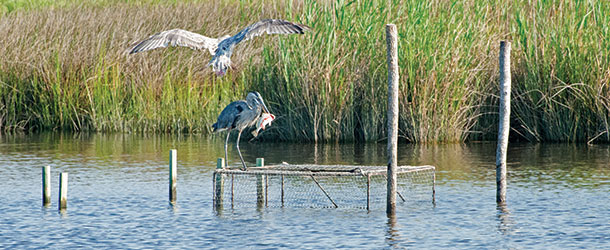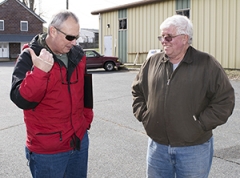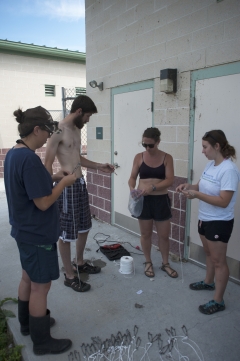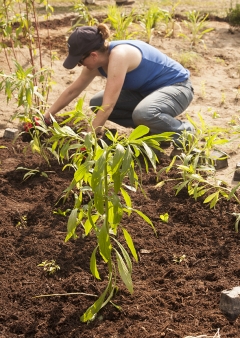Knauss legislative fellowships in Congress help build careers — and they're fun and educational. See our video and fact sheet for details.
On the Bay
A Photographer Eyes the Bay
The man who taught me the most about photography never told me anything about cameras or lenses or film types. His name was Robert de Gast, and years ago he showed me how to see the Chesapeake Bay through a camera lens.
Read more...Meet the Extension Specialists: Eric Buehl, Watershed Restoration
Eric Buehl knows all the breakfast specials at D & R’s Restaurant in Greensboro. As much an indoor town hall as a diner, the restaurant has hosted many a morning meeting between Buehl and Rich Covert, president of the Greensboro Volunteer Fire Company on Maryland’s Eastern Shore. Read more...
Chesapeake Quarterly’s Readers Speak: What Our Survey Found
Some of you like Chesapeake Quarterly, Maryland Sea Grant's magazine, just the way it is. Others would like more graphics and photos. Here are highlights from our recent survey of the magazine's subscribers.
Read more...Testing What Works in Oyster Aquaculture: Planting Gear in the Choptank
The Horn Point Laboratory Oyster Hatchery is conducting research to help Maryland oyster growers figure out what type of equipment best suits their business needs. Interns at the hatchery in Cambridge, Maryland, helped to anchor new types of oyster-growing gear along the Choptank River in the summer of 2016. Read more...
Photo Essay: A Long, Sweaty Day of Learning Stormwater Management
On a hot summer day north of Elkton, Maryland, seven trainees in the Cecil County Watershed Stewards Academy reached an important milestone. They were finally going to install their first stormwater management project or “practice” — a rain garden full of native plants — to improve local water quality and help protect the Chesapeake Bay.
Read more...








